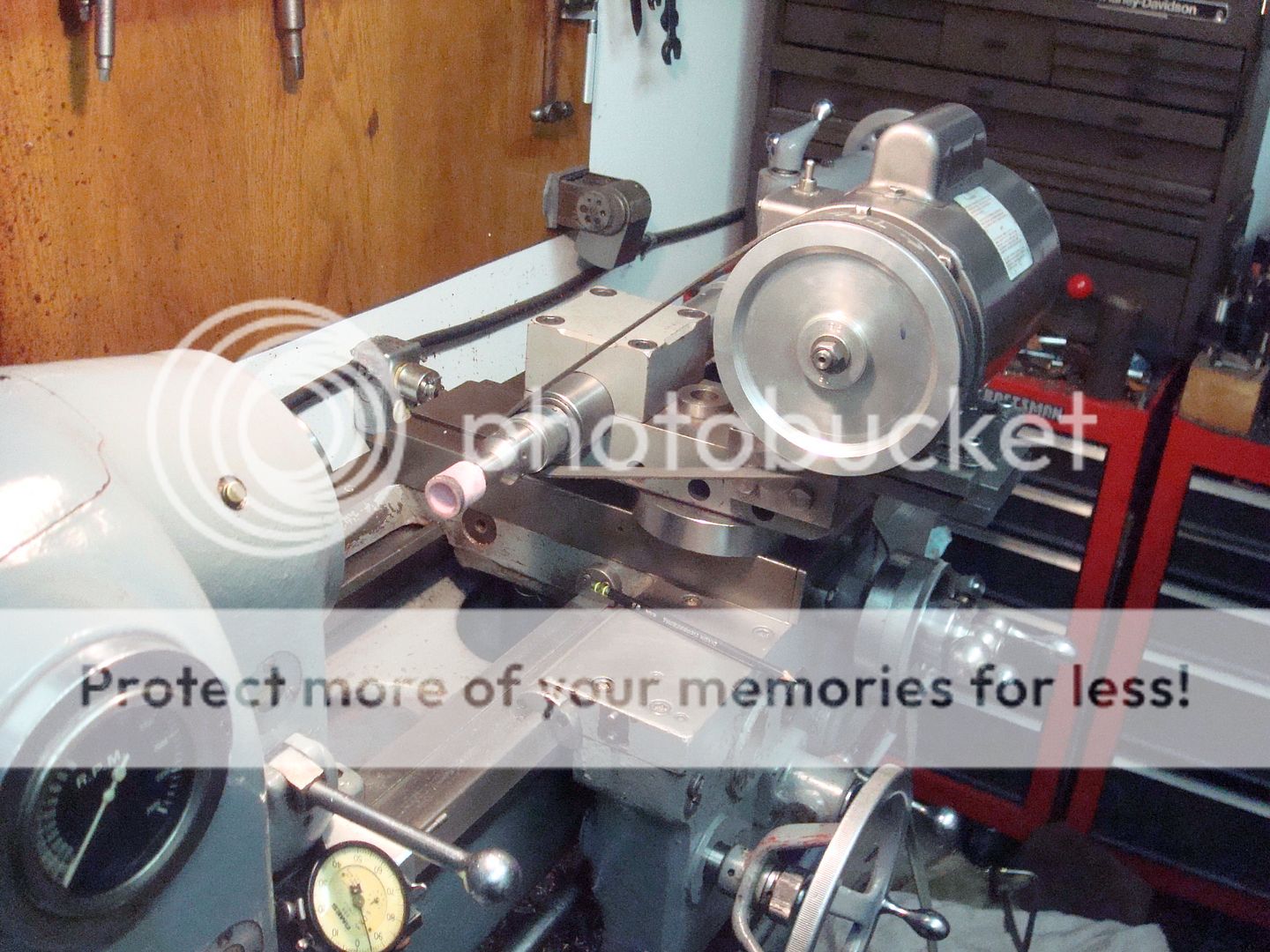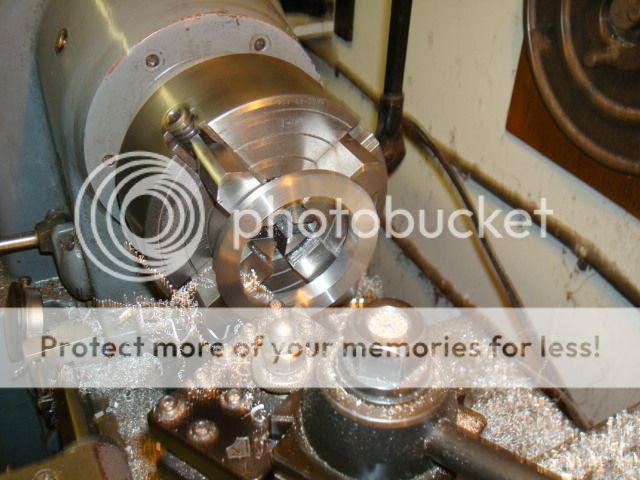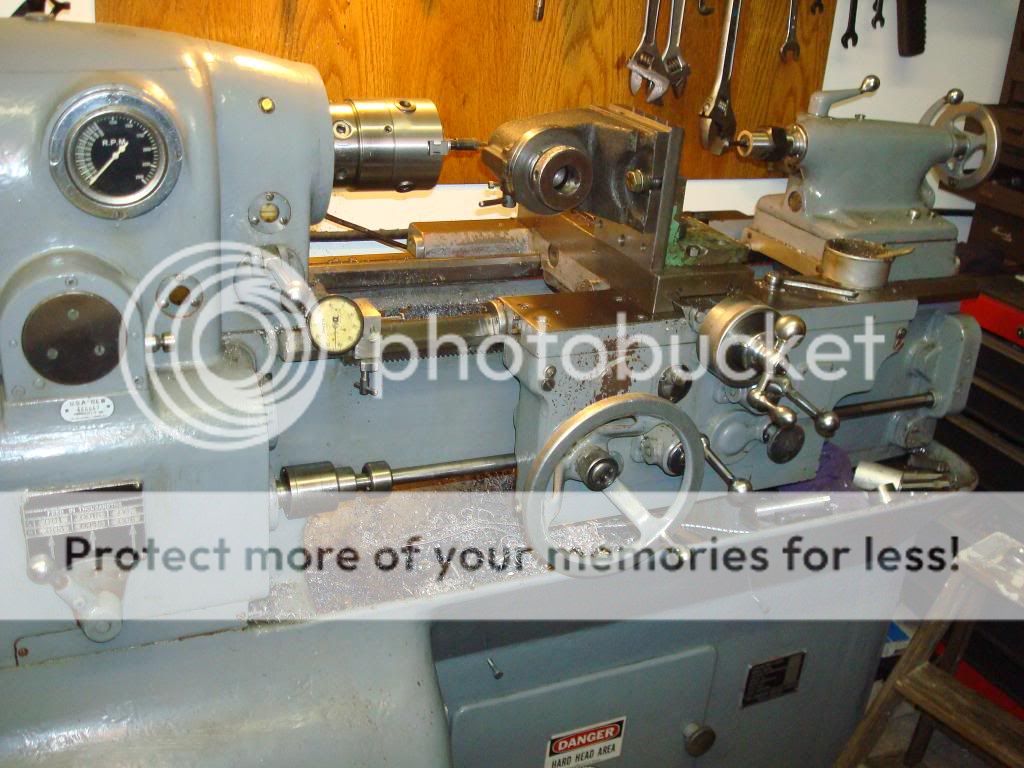They did offer electronic feed as an option, probably to have the offering as Hardinge, I think that is one of the most rare options.
One conclusion can be made over the years on this forum is, there is nothing set in stone, the factory made customized versions of the ee model, the one with the extra upper headstock backgear comes to mind!
My 1951 10ee MFG is marked on the data plate MFG where it would otherwise say Toolroom. This is one of many similar machines used at Hanford. The factory info states, Standard manufacturing lathe, with the only accessories being an 8" 3jaw light duty chuck, and a back mount toolpost for the dove tail on the cross slide. I dont know if the dovetail mount on top of the cross slide is standard for the MFG model.
The lack of all the parts of the more complex toolroom models makes the MFG abit easier to use, and easier to clean, I work the machine as much as possible, to save wear and tear on the better machines.
The lathe has alot of wear, but still is remarkably accurate, and good for nasty stuff like grinding chuck jaws.

I have seen what appears to be standard screw cutting toolroom models that are marked MFG at the Hanford site, the only difference I could tell, was the lack of filler used before they painted the machines, and taper attachment, so they are rough like the one I have.
I dont know if there is an accuracy difference compared the toolroom models, the cost was much less without extras like an $8000 taper attachment-late 90s price.
The machine does have the standard compound or top slide, making wood shaper table ring.



























